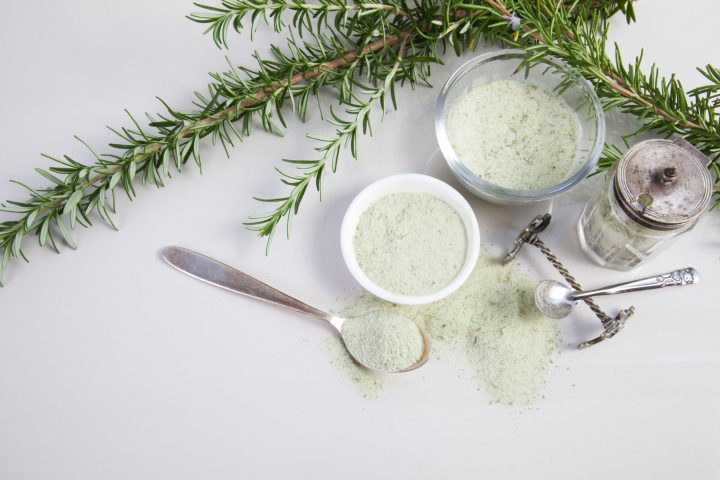MAIN INGREDIENT
Salt + aromatics = umami

Next time you’re in the spice aisle at the store, put plenty of salt, both fine and coarse, into your trolley and take them home to turn into your own flavoured salts.
The author supports Isabelo, chef Margot Janse’s charity which feeds school children every day. Please support them here.
This column is paired with this recipe.
Salt. Sour. Bitter. Sweet. Umami. They’re the notes of the palate, the vocal chords of taste. From the essential life-affirming smack of salt on the lips, via the sour bite of lemon and the tongue-curling bitterness of the citrus pith, to the nectar of sweetness, and finally the mystery of the umami. The unfathomable beauty of what it is to be human and to taste, to savour, to delight in what we eat. And what is any of it without that first tiny word. Salt.
Salt is really the original umami in itself – what flavourant has more impact, what aromatic is more arresting to the palate? Chilli, you might say, or a bite into a clove of fresh garlic, and how either of those whack your senses into orbit, instantly, wonderfully. But even they do not quite have the essential life-affirming quality of the salt without which our very muscles and nerves would not be able to function. And on its own, it’s unpleasant, but used deftly as a part of anything else in the kitchen, even sweet things, and it’s the making of almost every dish.
The aromatics of cooking begin with salt, the cornerstone of the kitchen edifice, the foundation on which everything else is built, the onion, the garlic, the celery and leek, the carrot, the tomato, the herb, the spice … and the water, never forget the water. It’s there in the tomato, the fruit, the wine, the stock, the sap of the tree that grew the orange, the soil that grew the olive tree. Without salt, the cook is at a loss, adrift in imperfection. Remove both water and salt from the kitchen and all is lost.
But need salt be merely salt? We can take our salt, whether fine or coarse or both, and match it with our favourite aromatics; flavour your salt with rosemary, or chilli or cumin, to add instant flair that does not come off the supermarket spice shelf in little bottles preserved with who knows what. As if salt needs preserving.
Next time you’re in the spice aisle at the store, put plenty of salt, both fine and coarse, into your trolley and take them home to turn into your own flavoured salts.
Everything in cooking is a base of something else or has a base of something other than itself. So take nori (dried seaweed), broken into pieces, blitz it and mix it with salt. Lemon, orange or lime zest, mixed with salt in much the same way as the very easy rosemary salt recipe; chilli, lemongrass, Szechuan peppercorns. Or hard seeds such as cumin, or fennel, or black mustard seeds, turned to dust in a grinder and then mixed with salt. Coriander seeds, too, although they will need plenty of grinding to get rid of the tooth-defying flakiness that is characteristic of them.
It’s an open field and you really can find any balance and ratio that you like. But I like one third aromatic to two thirds salt. Coarse salt is key as it has that slight crunch most of us like, which fine salt does not offer. But it’s worth using fine salt too so that it pours well and sprinkles better. I suggest a basic formula of one part coarse salt, one part fine salt, and one part aromatic. Unless, perhaps, the aromatic is dried chillies, in which case your palate can make an educated decision.
One factor to consider is to avoid using an aromatic that is not wholly dry. So chillies and finely chopped garlic, or grated lemon or orange zest, or a freshly picked herb, can be dried on a flat sheet in a very low oven until its moisture is released, but not until it burns, before being mixed with coarse salt and ground in a food processor. Then it is spread out on a foil lined tray and put in a warm place to dry out further, and finally it’s mixed with fine salt and jarred. When making rosemary salt, I put the tray on the table in the back yard in the low autumn sunshine. Just for two or three hours or so.
We can get bogged down trying to define what salt is. We can consult Wikipedia where we might slit our wrists to the joys of “the carboxylate anion of glutamate in specialised receptor cells” by way of ribonucleotides, and where the joy of something as indefinable as umami is annihilated in a swamp of the kind of words science would have us imbibe and regurgitate. Let’s just take the tidbit that umami is “the taste of glutamates and nucleotides” in food and that it’s a loanword from Japanese meaning something along the lines of “pleasant savoury taste”, so it’s the part of the palate that makes us thrill to the flavour of what we’re eating.
Salt. We’re just born to it, as we are to water and to breath itself. It deserves more attention in the kitchen than we tend to give it. DM/TGIFood
To enquire about Tony Jackman’s book, foodSTUFF (Human & Rousseau) please email him at [email protected]
Our Thank God It’s Food newsletter is sent to subscribers every Friday at 6pm, and published on the TGIFood platform on Daily Maverick. It’s all about great reads on the themes of food and life. Subscribe here.





 Become an Insider
Become an Insider
Comments - Please login in order to comment.